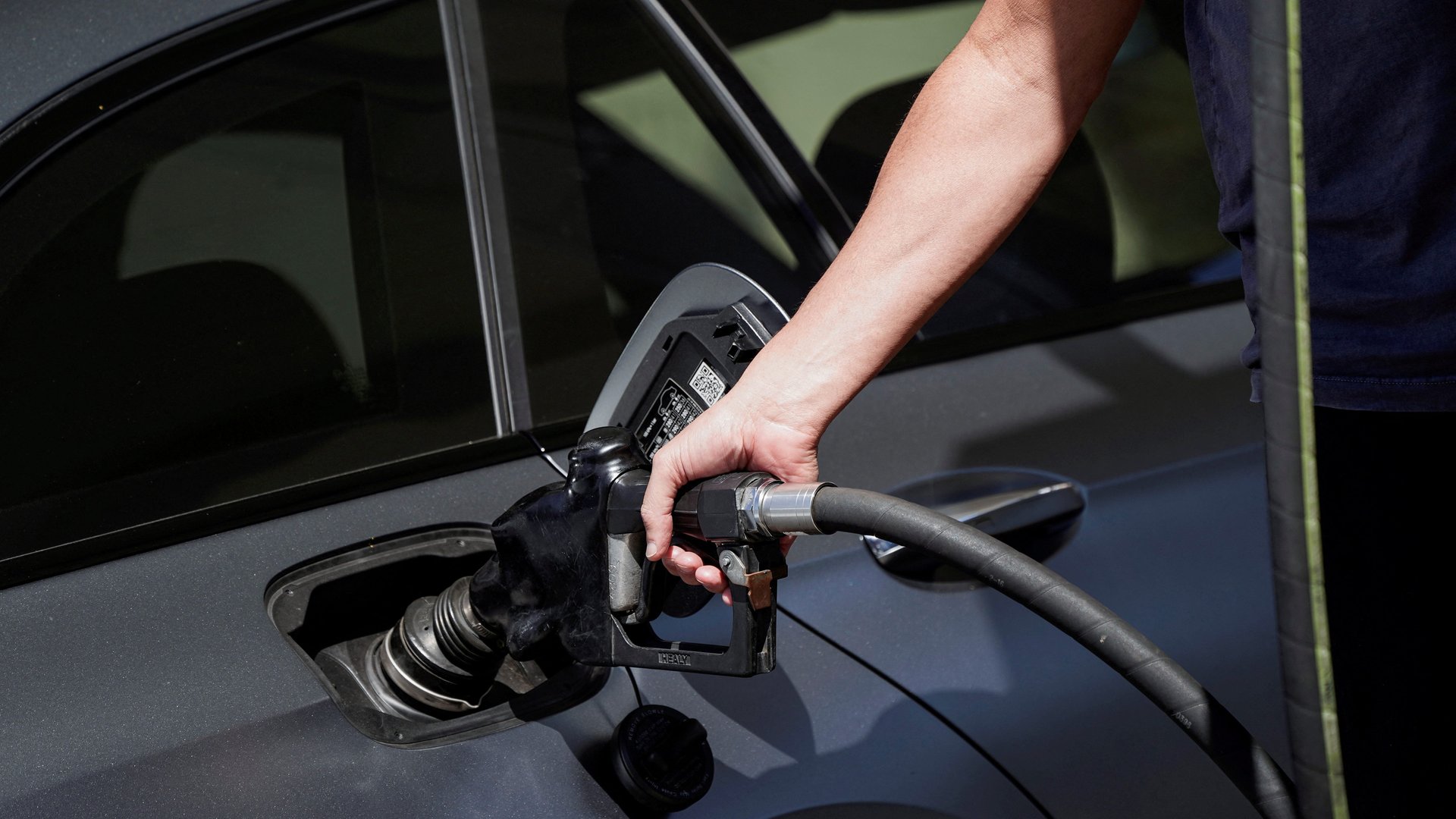Gas prices, not supply chains, are the main culprit in the US’s March inflation uptick
The US is experiencing early signs of deflation in products like cars and electronics, but the trends were clouded by gas prices that rose 18% from one month to the next and accelerated the pace of inflation.


The US is experiencing early signs of deflation in products like cars and electronics, but the trends were clouded by gas prices that rose 18% from one month to the next and accelerated the pace of inflation.
US consumer prices in March rose 8.5% from the same month last year, marking a 40-year high—and were up 1.2% from February. Minus food and energy, prices increased 0.3% month-over-month.
“The war in Ukraine heavily influenced consumer prices in the month of March,” said Greg McBride, chief financial analyst at Bankrate “Gas prices alone accounted for more than half of the monthly increase in the CPI.”
Used car prices fell by 3.8% from February to March, while the cost of smartphones fell by 4.2%. TVs also fell by 2.4% and audio equipment such as video cameras and microphones fell by 2.3%.
This is a sharp reversal from 2021’s surging prices for durable goods, which saw used cars increasing by more than 10% in one month, and TVs increase by 13% in one year.
With prices for food and shelter rising 1% and 0.5% respectively from February to March, overall inflation is being driven to new monthly highs on the back of gas prices pushed up by Russia’s invasion of Ukraine.
In response to rising gas prices, US president Joe Biden is increasing the global oil supply by 1% for the next six months by drawing down from the US strategic petroleum reserve.
When will gas prices go down?
After hitting a high of $4.33 in March, captured in the latest inflation data, average prices for regular gasoline in the US dipped to $4.09 a gallon on April 12. Prices at the pump could drop even further as oil prices come down. Some experts predict that gas will fall below $4 a gallon before the end of April.
If the Biden administration commits to buying future barrels of oil to refill the strategic reserve while prices remain high, then that will motivate oil producers to further increase supply, which could bring down prices longer term.
Has inflation peaked?
Some economists believe year-over-year US inflation peaked in March, and the pace of price increases will slow in April. That’s because last year, prices started rising in March 2021—so compared to that, inflation for the rest of this year will appear less extreme.
The monthly number is a more reliable indicator of where inflation is headed. Absent any surprises, economists also expect this March’s 1.2% inflation rate to be the peak of month-over-month price increases.
Why is rent getting more expensive?
The number of properties available for rent are has dropped from their pandemic highs. With fewer units available, renters who are moving or renewing their leases are having to pay much higher prices than during the pandemic, when rents plunged.
Why are car prices and electronics falling?
Consumers are starting to spend more on experiences like vacations, weddings, and dining out again, and less on stuff like electronics and cars.
This means manufacturers that were struggling to meet demand for hard goods are now seeing their warehouses fill up with them, resulting in lower prices.
The first signs of growing inventories pushing down prices are showing in demand for freight trucking, which has fallen sharply, noted FreightWaves, a logistics analytics firm.
Used cars prices also decreased as rental car companies rebuilt their fleets, according to the Manheim Used Vehicle Value Index (although Manheim expects depreciation, not a price crash, in used car prices this year).